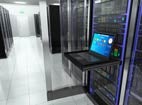Most IT professionals these days are well aware of the coming changes in data center infrastructure – perhaps not on an intimate level just yet, but many of the basic concepts behind cloud computing and software-defined infrastructure seem clear enough.
Last week, I highlighted some of the thinking around the advent of enterprise-class ARM infrastructure in the data center, with the note that ARMs are primarily suited toward large-volume, small-packet workloads characteristic of mobile and web-facing applications. But while much of the trade press has focused on the ARM ultimately “taking over” the data center, knocking the x86 off its 30-year perch, the reality is a bit more nuanced.
The thing is, web/mobile applications are not the only thing coming the enterprise’s way. There are also things like Big Data, enterprise application processing, and even desktop video conferencing and surveillance data to take into consideration. These functions typically involved lower-volume, large-packet workloads, which are more suited to the x86.
This is why it makes perfect sense for Intel to introduce new high-end Xeons even as it pursues simultaneous development of low-power devices like the Atom. Earlier this week, the company released the Xeon E7 v2, which is said to boost processing power even as it cuts power consumption in half and reduces the need for external storage infrastructure by boosting memory capacity. In this way, the device is expected to improve analytics and general number-crunching capabilities, which are still top priorities at most enterprises despite the headline-grabbing rise of scale-out architectures.
Of course, how the x86 is deployed in the data center is undergoing a transition of its own. Recent surveys by 451 Research indicate that demand for x86 rack servers is likely to stay in the trough for a while, but then again demand for the ARM-friendly microserver isn’t jumping through the roof yet either. For the moment, it seems that blades and converged systems are the solutions of choice in the data center, either of which can sport standard or low-power processors, again, depending on the workload being addressed.
Regardless of whether you are running heavy enterprise applications or transactional data, however, the need for power efficiency is paramount. That’s why server companies like Dell are quick to pounce on new x86 architectures that can deliver the goods without blowing the operating budget. The company recently introduced a new E7-based four-socket machine, the PowerEdge R920, which is said to be 71 percent more efficient than previous four-socket generations and can even be doubled up for about half the cost of a standard eight-socket server. The R920 offers up to 60 cores, 6 TB of memory, and enough cache to double IOPS performance.
Of course, if x86 is slated for heavy number crunching, what about top-end solutions like the IBM Power line? Rumors that IBM is looking for buyers for its chip business have been swirling for some time, but as of this writing at least, the company is still planning to unveil a new 22 nm Power8 architecture this fall. The question, though, is whether the enterprise is willing to support top-of-the-line solutions like the Power architecture in sufficient volumes for IBM to keep it on the books. And if not, are there any buyers out there willing to take it on?
At this point, talk about any type of processor “dominating” in the data center is off the mark. It’s fair to say that scale-out architectures championed by Facebook and Google will show significant growth in the years ahead, which will undoubtedly drive volume shipments of ARM and Atom solutions. But the installed base of x86 devices is still crucial to the enterprise mission, and new solutions that can get the job done quickly and at less expense will most certainly be welcomed with open, uh, arms.



